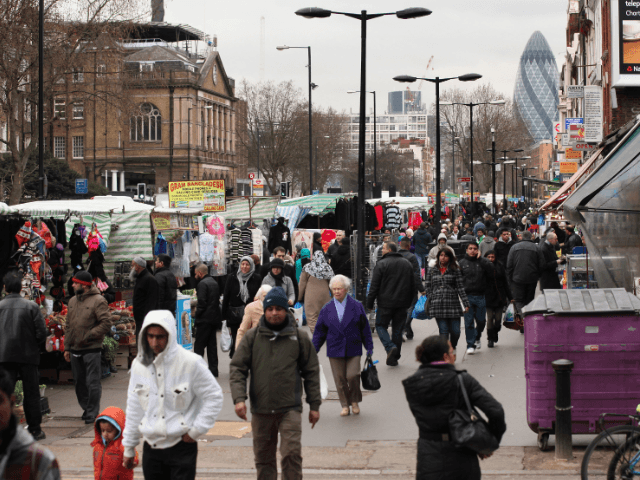One in every three Londoners is now born abroad, with vast swathes of the UK capital dominated by particular nationalities.
In certain boroughs, such as Westminster, Kensington and Chelsea, and Brent, more than half the population is foreign-born, with Indian being the dominant nationality in 10 areas of the city. Residents born in Bangladesh, Turkey, Nigeria and Poland also have the highest numbers in at least three boroughs each.
London’s population reached an all-time high last year of 8.6 million people, beating the previous record set before the Second World War in 1939, with more than two million people moving to the city over the past 20 years.
Statistics from the Mayor of London’s Data Store show the inner London boroughs have a far higher immigrant population than the outer boroughs, and there is a tendency for people of certain nationalities to gather in specific areas with their fellow countrymen.
The Daily Mail reports that at the top the list are the boroughs of Brent and Haringey, which have the highest proportion of immigrant residents at 53.3 per cent each, followed by Kensington and Chelsea on 51.8 per cent and Westminster on 50.9 per cent.
Until 1991, London’s overall population had been declining since the Second World War as people moved out to start a new life elsewhere. That exodus of native-born Londoners is continuing, but the rate of immigration is now so high that the overall population is growing at record rates.
Analysts believe the number of foreign-born people living in the capital will outnumber the number of native-born by 2031, when the immigrant population will reach at least five million. This will take the city’s population to more than 10 million by 2031.
Meanwhile, number of white Britons leaving the city continues apace, with more than 600,000 moving out of London in the space of just 10 years from 2001 to 2011.
Speaking last year, Professor Michael Batty of University College London told the BBC: “It went down from about 8m to 6.6m over a period of about 30 years and the main reason was suburbanisation – suburban growth, people getting cars, changing transport and also slum clearance.
“London, of course, was less attractive internationally in terms of migration during those years.”

COMMENTS
Please let us know if you're having issues with commenting.